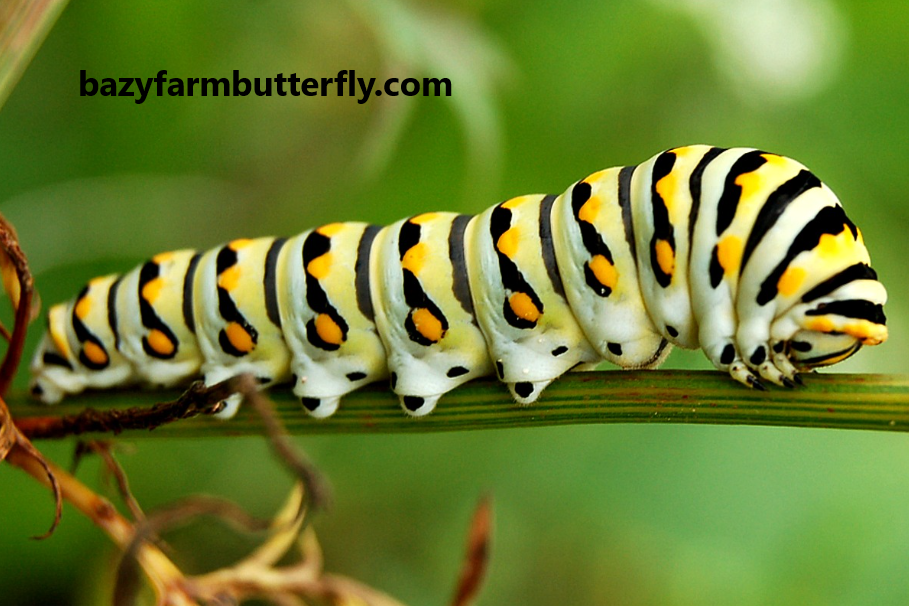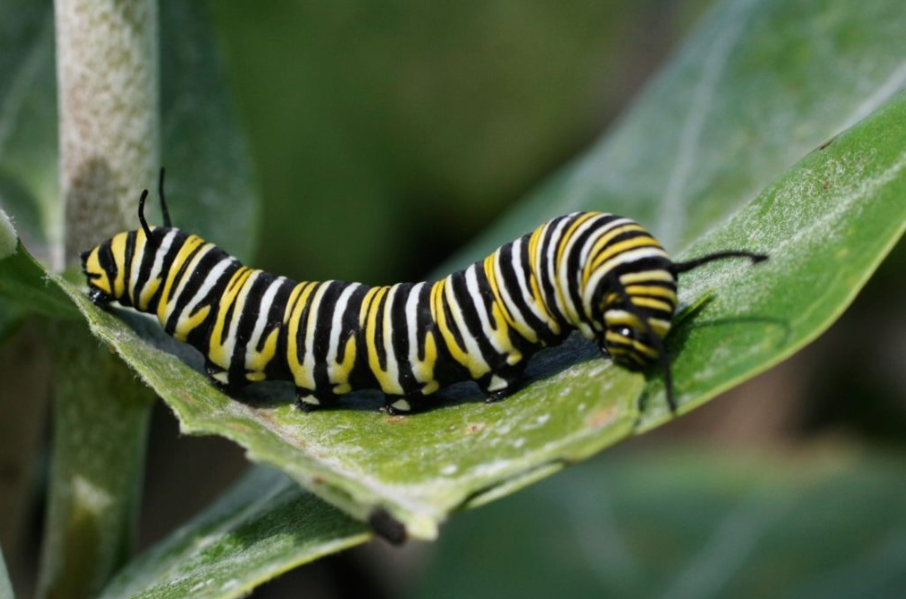Caterpillars are the larval stage of butterflies and moths. They are fascinating creatures that undergo metamorphosis, changing from a tiny egg to a larva, then to a pupa, and finally to an adult butterfly or moth. During their larval stage, what does a caterpillar eat? caterpillars must eat enough to support their rapid growth and development. Today, Bazy Farm will explore the different types of food caterpillars eat and the role their diet plays in their development.
What is a Caterpillar?

A caterpillar is the larval stage of butterflies and moths, belonging to the order Lepidoptera. They are characterized by their long and cylindrical bodies, segmented legs, and pairs of prolegs along the abdomen. Caterpillars come in a variety of sizes, shapes, and colors, with some having distinctive patterns or markings on their bodies. Caterpillars are voracious eaters, using their mandibles to chew and eat the leaves of plants.
The Role of Caterpillars in the Ecosystem
Caterpillars are a significant food source for many animals, including birds, reptiles, and mammals. They are an essential link in the food chain and contribute to pollination by feeding on flowers. Understanding their diet is critical to understanding the ecosystem they live in and the role they play.
Generalist vs. Specialist Feeders
Caterpillars can be classified as either generalists or specialist feeders based on their feeding habits. Generalist feeders will eat a wide range of plants, while specialist feeders will only eat specific types of plants.
For example, the monarch caterpillar is a specialist feeder that only eats milkweed. In contrast, the cabbage white caterpillar is a generalist feeder that will eat a variety of plants, including cabbage, broccoli, and kale.
What Does A Caterpillar Eat?

Caterpillars are herbivores, meaning they feed exclusively on plant material. However, not all plants are created equal when it comes to caterpillar nutrition. Some species of caterpillar are highly specialized, feeding only on specific types of plants. Others are more generalist, consuming a wide range of plant materials.
Specialized Caterpillar Diets
Some caterpillars are highly specialized, feeding exclusively on a single species of plant. For example, the monarch butterfly caterpillar feeds only on milkweed plants. Other examples of specialized caterpillars include the pine processionary caterpillar, which feeds on pine needles, and the tomato hornworm, which feeds on tomato plants.
Generalist Caterpillar Diets
Other caterpillars are generalists, feeding on a wide range of plant materials. Examples of generalist caterpillars include the cabbage white butterfly caterpillar, which feeds on plants in the Brassicaceae family (such as broccoli and cabbage), and the tent caterpillar, which feeds on a variety of deciduous trees.
Feeding Habits of Caterpillars

What does a caterpillar eat? Caterpillars have unique feeding habits. They use their mandibles to chew and eat the leaves of plants. They have a voracious appetite and can consume a large amount of food in a short amount of time. They also have an efficient digestive system that allows them to extract the necessary nutrients from their food.
Browsing
Some caterpillars are browsers and will feed on the leaves of trees and shrubs. They will eat the entire leaf, leaving only the stem behind. These caterpillars are often found in forests and wooded areas.
Leaf Miners
Leaf miner caterpillars are unique in that they tunnel into the leaves of plants to feed. They leave behind distinctive trails or patterns in the leaves, which can be used to identify them. These caterpillars can be found on a wide range of plants, including fruit trees and vegetables.
What Does A Caterpillar Eat: Types of Plants
Caterpillars have a varied diet and will eat a wide range of plants. The following are some of the most common plants that caterpillars eat:
Milkweed
Milkweed is a favorite food source for many caterpillar species, including monarch butterflies. The leaves of the milkweed plant contain toxic compounds that make the caterpillars distasteful to predators.
Read more: When do you plant milkweed
Dill
Dill is a popular food source for swallowtail butterfly caterpillars. It is easy to grow and produces abundant foliage that caterpillars can consume.
Cabbage
The cabbage white caterpillar is a common pest that feeds on cabbage and other members of the brassica family, including broccoli and kale.
Tomato
Tomato hornworms are a common pest of tomato plants. They can consume large amounts of foliage and fruit, causing significant damage to plants.
Oak
The larvae of many species of moths feed on oak leaves, including the beautiful oak processionary moth.
Conclusion
Caterpillars are fascinating creatures with diverse and specific diets. Understanding their feeding habits and the types of plants they prefer is essential for anyone interested in raising caterpillars or promoting butterfly and moth populations in their garden. By providing the right plants and environments for these creatures, we can support their growth and development and help ensure their survival.
In conclusion, the diet of a caterpillar is diverse and unique, varying depending on the species and environment. Some caterpillars are generalists and will eat a wide range of plants, while others are specialists and will only eat specific types of plants. Caterpillars have a voracious appetite and use their mandibles to chew and eat the leaves of plants. Understanding the feeding habits of caterpillars and the types of plants they prefer is essential for anyone interested in promoting butterfly and moth populations in their garden.
>>> Read more: How Long Do Butterflies Live?

